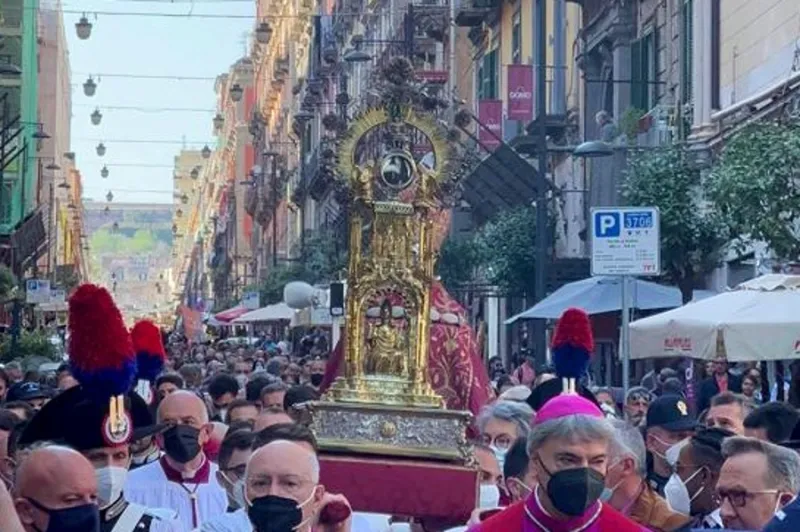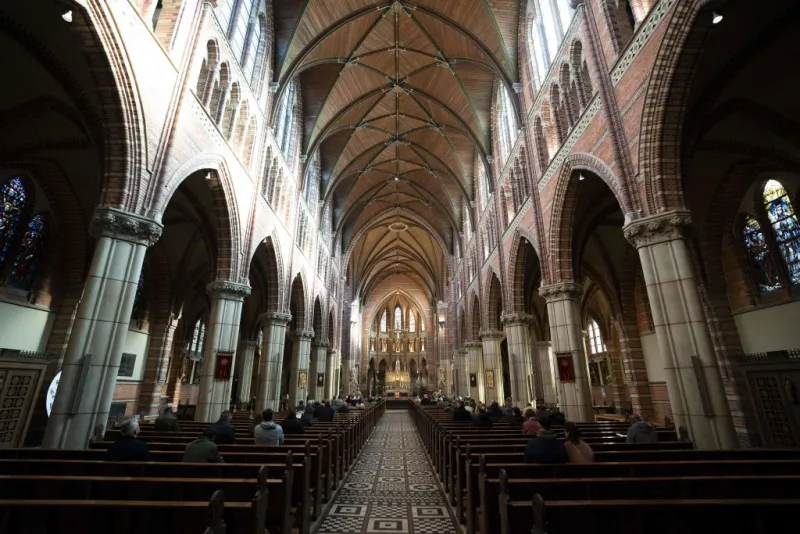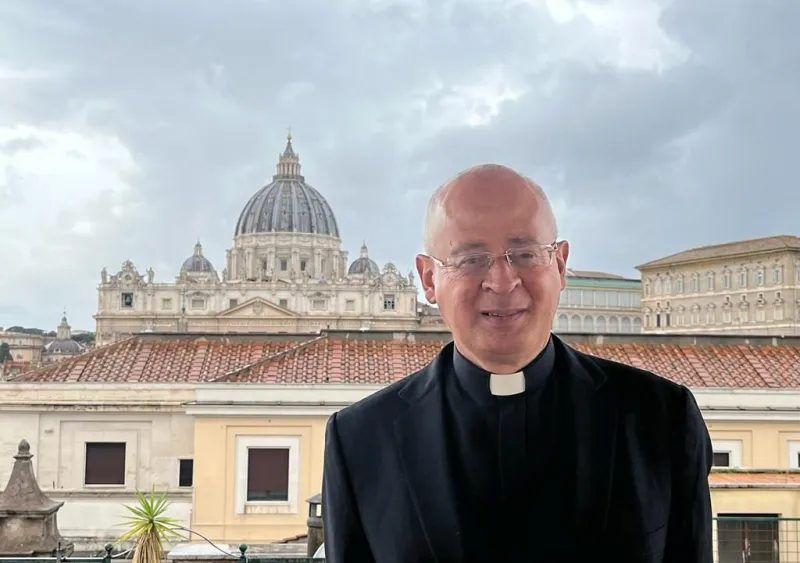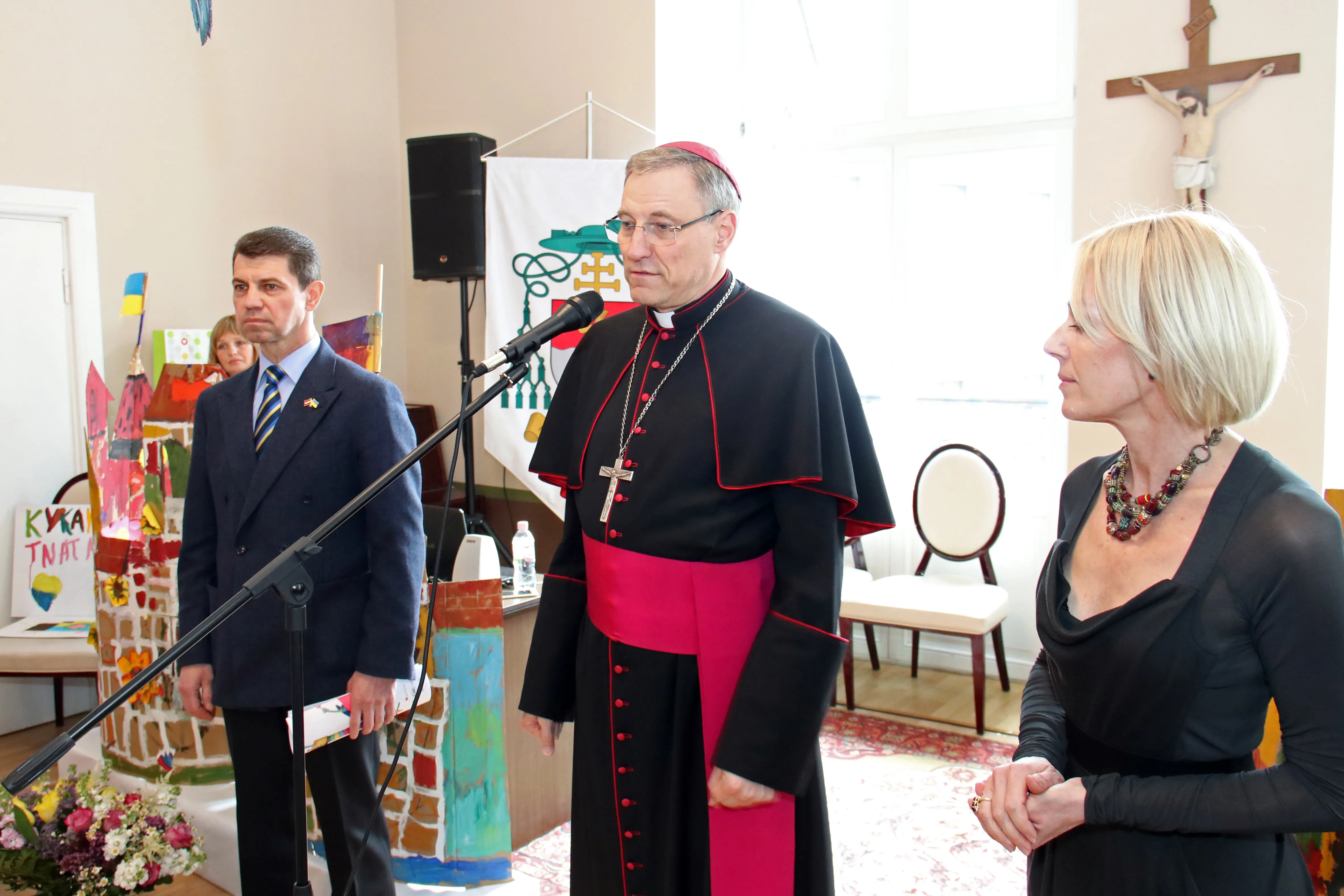 Archbishop Domenico Battaglia leads a procession in honor of St. Januarius in Naples, Italy, on April 30, 2022. / Jacob Stein’s Instagram account Crux Stationalis.
Archbishop Domenico Battaglia leads a procession in honor of St. Januarius in Naples, Italy, on April 30, 2022. / Jacob Stein’s Instagram account Crux Stationalis.
Rome Newsroom, May 3, 2022 / 08:10 am (CNA).
For the first time in three years, Catholics held a solemn procession through the streets of Naples on the first weekend of May after the blood of St. Januarius was found liquefied.
Archbishop Domenico Battaglia of Naples opened the safe holding the relic of St. Januarius’ blood in Naples Cathedral on April 30 and found that the blood had already liquefied.
The reputed miracle usually occurs up to three times a year when the archbishop holds up and rotates the ampoules containing blood, revealing that the dried blood has liquified.
In Neapolitan lore, the failure of the blood to liquefy signals war, famine, disease, or other disaster.
Local Catholics gathered at the cathedral after 5 p.m. on April 30 and exclaimed: “The miracle has happened!”
A bust of St. Januarius and the ampoules holding the saint’s blood were then carried in a traditional procession through the narrow streets of Naples from the cathedral to the Basilica of St. Clare.
Jacob Stein, an American, and a friend were visiting Naples when they stumbled upon the procession with the relic of St. Januarius, who is known in Italian as San Gennaro.
“My friend and I looked at each other and said, ‘I guess we are processing with San Gennaro tonight,’” Stein told CNA.
“Shoulder to shoulder, we processed behind San Gennaro who had come from the Duomo [cathedral] and ended at the Monastery of Santa Chiara with Holy Mass. On the streets, many were looking from the windows and balconies. You could hear ‘Alleluia’ and ‘Viva, San Gennaro!’ as we passed the piazzas.”
“The occasional confetti gun went off above our heads, as Neapolitans joined the procession in the many-layered, chaotic yet full expression of their religious procession throughout the small streets of Naples.”
Januarius’ blood also liquefied in May 2020 and 2021, but the celebratory processions were canceled due to the COVID-19 pandemic. The May 2019 procession was canceled due to adverse weather conditions.
During the Mass to mark the liquefaction, Archbishop Battaglia highlighted St. Januarius’ faithfulness to the Gospel by following Jesus to the point of martyrdom.
St. Januarius, the patron saint of Naples, was a bishop in the third century who is believed to have been martyred during the Christian persecution of Emperor Diocletian.
“If we are here tonight it is because Bishop Januarius took this Word seriously, following the Lord Jesus to the end, even to the point of shedding his blood, even to the point of giving his life, knowing that there is no greater love than one who gives his life for his friends,” Battaglia said in his homily.
The archbishop also condemned the violence he has witnessed in the city of Naples since his installation in 2020.
“Too many times in this still short time I have lived here in Naples have I had to caress the faces of young mothers wounded by the unprecedented pain of the loss of their child, killed through no fault of their own, perhaps in the context of an argument between boys,” he said.
The 59-year-old archbishop said that the sign of the liquefaction of Januarius’ blood was an invitation to the people of Naples to work to “stop the flow of innocent blood, the hands of brothers who hurl themselves against brothers, the wounds that tear the social, educational, economic fabric of our city and the whole world.”
He asked for St. Januarius’ intercession to stop not only the violence in his archdiocese, but also to bring an end to the “blood still flowing” in the war in Ukraine.
“How important is all this in such a complex, difficult, heavy time in which the blood of our martyr Januarius, a luminous sign of the blood of the One who loved us by offering Himself for us on the cross, continually reminds us of the blood of so many small, innocent victims of evil, violence, malfeasance, and war,” Battaglia said.
Stein and his friend experienced some of the crime in the city of Naples on a small scale when they were mugged the day after the procession.
“After we recovered, we were walking to the police station to make the formal declaration of the theft. We passed a group of teenagers preparing a processional float with lilies for the Madonna dell’Arco at the start of May. They called out to us, there will be a procession at 4:30 p.m., beginning just around the corner from where we were accosted,” he said.
A local couple also invited Stein and his friend into their home for a few hours and offered them coffee, cigarettes, bruschetta, pasta, and wine.
The liquefaction of St. Januarius’ blood traditionally happens three times a year: the first Saturday of May, Sept. 19, the saint’s feast day, and Dec. 16, the anniversary of the 1631 eruption of nearby Mount Vesuvius.
[…]












Shape of things to come.
Have they tried the TLM? Rumour has it that may bring in the younger set.
Gilberta: This is a common illogical and misleading falsehood that you should get rid of and deceptively advanced by promoters of the old pre-Vatican II Mass, that the Vatican II Mass attendance declines whereas with the Tridentine Mass attendance increases. There is totally no connection. Decrease in mass attendance is a result of a complex of social factors and can never be singularly attributed to the Vatican II Mass. Just take a look at the surging numbers and faith of emerging Catholic communities in Africa and Asia, they are nourished and sustained by the Vatican II Mass.
You shouldn’t comment on the subject if you are so devoid of knowledge as to believe there are such things as a “pre-Vatican II Mass” and a “Vatican II Mass.” They don’t exist. As far as your condescension goes, the prior suggestion was valid. Many Catholics do perfer to worship God instead of themselves.
DD;
You have no idea what you’re talking about. Have you ever even been to a Latin Mass? I have. There are people there who come 100 miles each way for the Mass, NOT wanting to go to the NO Mass a few miles away.
Deacon Dom,
I think the point is more about demographics. Traditional/Conservative Catholics are the only Catholic population in the West increasing demographically. Have you attended a TLM recently? They are full to overflowing with young families & numerous children in a similar way that Amish & Mennonite churches are. Hasidic communities also.
Western cultural Catholics are contracepting themselves into a virtual oblivion just like the popular culture that surrounds them.
Africa & Asia are different from the West & what works in those regions may look different also. But their surging numbers are fueled by people actually choosing to reproduce themselves. That’s what’s lacking in Holland & the West.
Good point Gilberta.
🙂
I offered the TLM for the first time on my ordination date in 2020. Such a relief to have full focus on whom I’m offering and not to play with the congregation with the banality of music that is so soul destroying! Great thing about the TLM is this focus on Christ and not the lame inaudible response to the prayers!
Interesting to see the response to my comment.
Today’s article (Sept. 7) in The Catholic Thing would seem to bolster the theory that the ditching of the TLM, in which Holland apparently played a role, wasn’t exactly a brilliant (or VII-mandated) move.